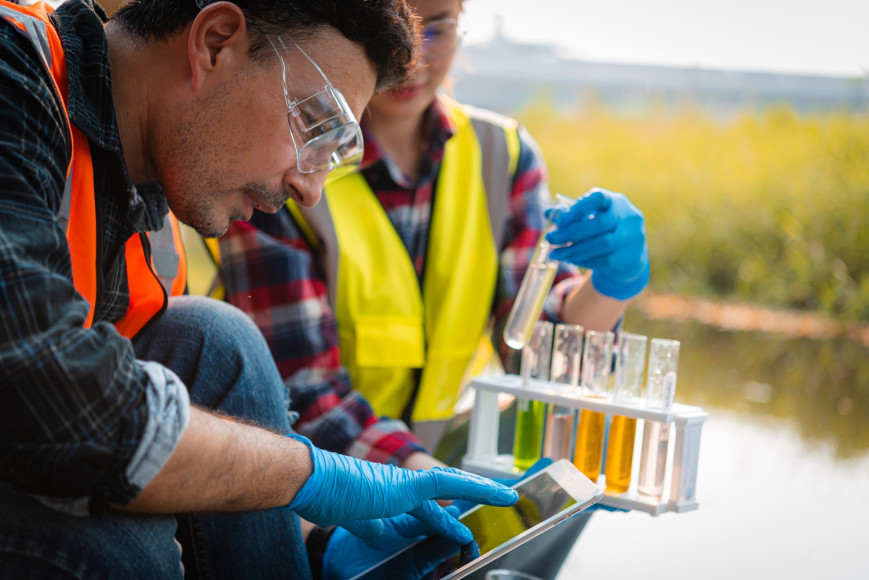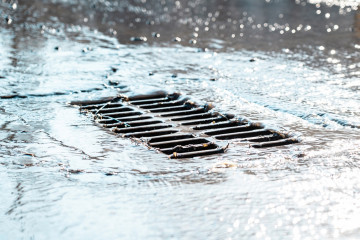Per- and polyfluoroalkyl substances (PFAS) have been the subject of growing concern due to their persistence in the environment and potential health risks. Now, the Environmental Protection Agency (EPA) is taking a significant step forward in understanding and addressing PFAS contamination through a comprehensive data gathering initiative involving publicly owned treatment works (POTWs) and industrial facilities.
In a recent Federal Register notice, the EPA announced its plans to collect data on PFAS discharges from thousands of upstream industrial facilities, as well as collecting data on the presence of these chemicals in POTW influent, effluent, and sewage sludge. This initiative lays the groundwork for potential Clean Water Act limits on PFAS across various sectors and sources.
Why is This Data Collection Effort Necessary?
According to the EPA, there is currently limited publicly accessible data on PFAS discharges to POTWs, the relative contributions of residential, commercial, and industrial sources, and the fate of PFAS in wastewater treatment processes. By gathering comprehensive data, the EPA aims to fill these knowledge gaps and inform future regulatory actions.
The EPA's initiative involves gathering basic data from 400 POTWs through a questionnaire, the selection of approximately 200 to 300 POTWs based on questionnaire responses, and the collection of sampling data from said subset of 200 to 300 POTWs. According to the EPA, this data will be instrumental in developing technology-based effluent limitations guidelines (ELGs) for different industry sectors and informing risk assessments and management options.
One of the key findings driving this initiative is that most POTWs currently lack processes and technologies to effectively remove PFAS from wastewater. As a result, PFAS are discharged into surface waters or accumulate in sewage sludge, posing potential risks depending on sewage sludge management practices.
The data collected will not only help identify and prioritize industrial sources of PFAS, but will also establish a national dataset of sewage sludge characteristics. This dataset will be crucial for informing future risk assessments and regulatory decisions regarding sewage sludge management.
EPA Data Collection Methodology
The EPA's approach involves a two-phase sampling program, with selected POTWs collecting and analyzing samples of industrial user effluent, domestic wastewater influent, POTW influent, POTW effluent, and sewage sludge for specific PFAS and ancillary parameters.
To ensure the success of this initiative, the EPA has consulted extensively with stakeholders, including representatives from the POTW industry, state regulators, and environmental agencies. This collaborative approach ensures that the data collection efforts are comprehensive and relevant to the needs of all stakeholders involved. The EPA hopes to begin collecting sampling data in 2024 and 2025.
How to Respond if Your Organization Receives a Directive to Sample
If you operate an industrial facility and are selected as part of this program for the collection of effluent samples, there are a few key items to keep in mind:
- Determine the correct location for the collection of effluent samples. Ideally, this will be an easy location to access and will be located as close as possible to the connection with the municipal sanitary sewer.
- Collect an influent water sample as well as it is not uncommon to observe PFAS in water coming into a facility from municipal-supplied water sources.
- Collect quality assurance samples. Matrix spike and matrix spike duplicates, duplicate samples, and blank samples are great ways to validate and confirm data integrity.
- Sample collection should be completed by a trained professional experienced with potential PFAS sources to eliminate doubt in the sample results and prevent potential cross contamination.
For more guidance, check out our recent blog post. While many of the above items may not be required as part of this program and likely will not be required to be reported to the EPA (such as quality assurance samples and influent water samples), the collection of these samples will help validate potential sources of PFAS and data integrity.
Wrap Up
In conclusion, the EPA's ambitious data gathering initiative marks a significant step forward in addressing PFAS contamination in water treatment systems. By collecting comprehensive data from POTWs and industrial facilities, the EPA aims to better understand the sources and fate of PFAS, paving the way for informed regulatory decisions and effective management strategies to protect public health and the environment.
Have questions? Reach out to our team of experts today to get them answered!
Want more news and insights like this?
Sign up for our monthly e-newsletter, The New Leaf. Our goal is to keep you updated, educated, and even a bit entertained as it relates to all things EHS and sustainability.
Have any questions?
Contact us to discuss your environment, health, safety, and sustainability needs today.







